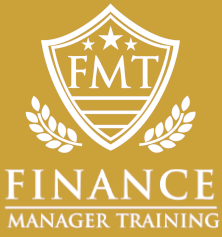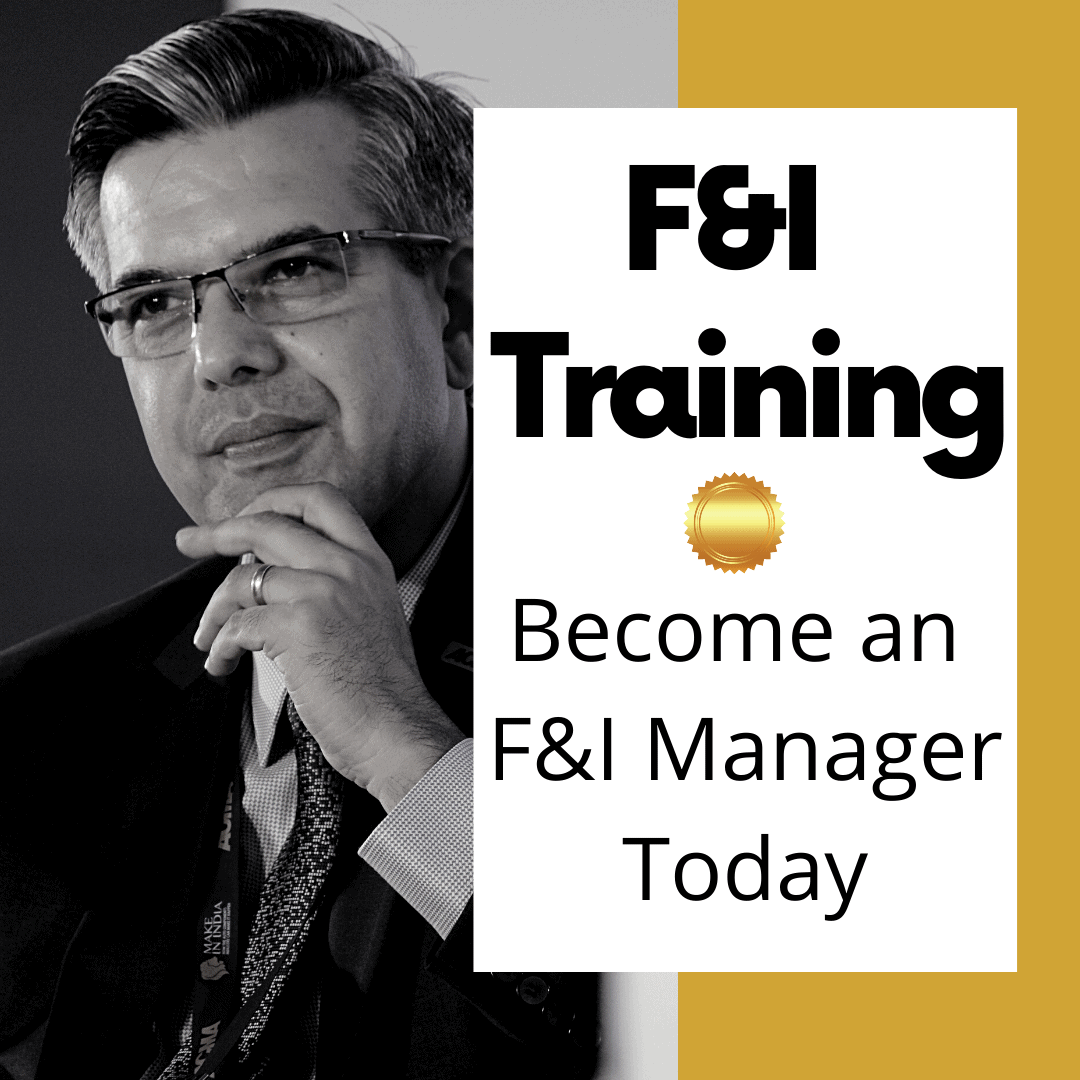
The Best F&I Menu Presentation in 2025

Ryan Daniel
Updated December 20, 2024
Welcome to the Ultimate guide on How To Present An F&I Menu.
Tired of F&I menu presentations that just don’t work? You’re not alone. Every year we help F&I Managers who find that their F&I Menu Presentation is no longer producing the results they desire (and perhaps never did).
Traditional training has often relied on word tracks that were provided by F&I product providers, and leaned heavily on memory, repetition, and timing.
Finance Manager Training believes in a better way. A simpler way. With that said, the following is our time-tested (and likely to be copied) F&I Menu presentation:
Welcome to the Ultimate guide on How To Present An F&I Menu.
F&I Managers often come to us because their F&I Menu Presentation is no longer working (and perhaps never did).
Trainers taught these F&I Managers a version of menu presentations that are based on word tracks developed by F&I product providers. These word tracks rely on memory, repetition and timing.
Finance Manager Training believes in a better way. A simpler way. A conversationally based F&I Menu Presentations.
The following is our time-tested (and likely to be copied) F&I Menu presentation:

How To Present The F&I Menu
Our F&I Menu presentation is simple to learn and easy to implement.
There are no word tracks to memorize. Instead, we have developed a series of simple steps that can be modified when needed (such as in the case of a customer paying cash instead of financing).
Each of these steps is designed to be completed in just a minute. The entire menu process should be quick. The goal with each step is simple: to help you quickly, efficiently, and profitably guide customers through their purchase and delivery process.
Steps To Present The F&I Menu
- The Buffer Documents: Approximately half of your delivery paperwork should be printed before the customer enters your office. The pre-printed portion of the paperwork is called your buffer documents. The unprinted paperwork is your time documents.
Prior to your F&I Menu, you should begin the delivery process with a few buffer documents. These documents “buffer” the transition between sales & finance, and resets the temperature for the customer who has newly entered the F&I Office. More on buffer documents later.

- The Manufacturer Warranty: The last of your buffer documents should be a quick glance at the manufacturers warranty. Now is not the time to begin drawing charts and comparing/contrasting. Your goal here is to provide a quick breakdown of the manufacture warranty, what is covers, and its limitations. Summarize, don’t detail.
- The F&I Menu: Now it’s time to present your actual F&I Menu. The #1 mistake that F&I Managers make when presenting the F&I Menu is presenting too slowly. Over-explaining products is a no-no.
The actual F&I Menu presentation should take a total of 2 (two) minutes. That is two minutes from the time you start going over the numbers on the top of the F&I Menu to the time that you finish explaining your very last package.
Want to see this process in video form?
In the following video, we begin the F&I Menu at 3 minutes and 30 seconds and finish at 5 minutes and 30 seconds. A total of only 2 minutes.
At this point, most of our F&I students ask us:
“But WHY do you recommend that we present the F&I Menu so quickly?”
Well, it’s all about the percentages.
A certain percentage of people are ready to purchase your products as soon as they walk into your office. The more you talk, and the more you explain, the more questions you raise in the customers mind that were never there when they walked in.
You’re essentially answering objections that do not exist. You’re creating a problem that wasn’t there.
“And what about those people who are not ready to purchase when they walk in the door?”
You can always add words when needed. But you can never take them away once they’re said.
For customers needing a deeper explanation, we transition to an in-depth look into the length of their loan, the manufacturer’s warranty, and how our F&I Products compare and fit into these items.
We like to do this on a blank piece of paper with a large marker. A marker is easier to read and follow with your eyes than a pen would be. Here is an example:
- Objection Handling: The majority of F&I Menu presentations will involve an objection from the customer. An objection is any indication from the customer that they are not ready to purchase your product.
There are 2 ways to handle an objection:
a) Directly: “What is stopping you from purchasing today, Mr. Customer?”
b) Passively: “No problem, Mr. Customer. Let me go ahead and start printing the remainder of your paperwork.”
While there is merit to both options, we highly suggest (and most customers appreciate) a passive approach.
A passive approach does not mean that you give up trying to sell to this customer. It only means that you delay negotiations for a few moments, so tensions can drop.
Here is how a passive approach may look in a real-life situation:
Customer: Listen man, I’m just not interested.
F&I Manager: No problem, Mr. Customer. Let me go ahead and start printing the remainder of your paperwork.
Note: This is where your TIME documents, mentioned above, come into play. While you are printing the remainder of their paperwork (the “time” documents), the customer has time to cool off. On your end, this gives you time to set the stage for a 2nd approach at selling. Lastly, by taking a passive approach, the customer feels respected and more at ease which makes your 2nd attempt easier.
F&I Manager: (typing on the computer, printing, etc.) Are you a Reds fan?
Customer: Oh yeah, big fan.
F&I Manager: Ha! I kind of figured. Saw your hat. Great game last night, wasn’t it?
Customer: One of the best I’ve ever seen!
Note: Engagement and rapport building are easily accomplished while you are busy printing documents and arranging paperwork. This feels much more authentic to the customer than if you were simply staring at them and trying to force engagement with a stack full of already printed paperwork next to you.
F&I Manager: (as you near the end of printing) You know, Mr. Customer, I feel so silly. I just thought of something that I forgot to mention before, and I think you’re probably going to want to know about it…
With this transition statement, you open the gates to another swing at product presentation. But this time, with a twist.
Mention benefits that you didn’t mention the first time. Create value that you didn’t initially add. Tell a story about a previous customer who needed the coverage.
At this point, if the customer is still raising objections, then it may be time for some traditional F&I Closes. Here is one example:
The Finale
Congratulations! You have reached the end of our 4-Step F&I Menu Presentation process.
By using this system, our F&I Students have seen incredible results in the F&I Office. One student was asked to present an F&I Menu at his interview. When he used our menu presentation system, the general manager was so impressed that he offered the student the job.
While this article is meant to be informational, it is not complete. The best way to learn our system is to enroll in our F&I Training program in its entirety. Doing so will enable you to learn the psychology and motivation behind what we do (as well as a plethora of other F&I processes and lessons).
What are the buffer documents?
Before we wrap up this article, we wanted to go back and talk a little about buffer documents. We get a lot of questions on these.
As mentioned before, buffer documents are meant to buffer the transition between sales & finance. Diving straight into an F&I Menu as soon as a customer enters your office is a bad idea and can be seen as aggressive. Instead, allow the customer time to become acquainted with you and your office by beginning with buffer documents.
The exact order of your buffer documents will vary from dealership to dealership and state to state, as different states will have varying documents.
Finance Manager Training is located in New York, and we recommend the following to be used as buffer documents where we operate:
- Privacy Policy
- Disclosures
- DMV Paperwork
- Lemon Law
- Manufacturers Warranty
2025 F&I Menu Update
What’s New in 2025 for F&I Menu Presentations?
1. Digital Menu Integration
Digital F&I menus are now standard in most dealerships, offering:- Interactive Displays: Customers can explore options on tablets or touchscreens during the presentation.
- Real-Time Customization: Adjust loan terms or products dynamically based on customer feedback.
- Enhanced Transparency: Digital tools build trust by showing clear cost breakdowns and benefits.
2. AI-Powered Insights
Artificial intelligence is now embedded in many dealership systems, providing F&I Managers with actionable data:- Customer Profiles: AI analyzes previous purchases, credit data, and vehicle preferences to suggest tailored packages.
- Behavior Prediction: Algorithms can predict which customers are more likely to opt for specific products, helping F&I Managers prioritize their pitch.
3. Shorter, Data-Driven Presentations
In 2025, the ideal F&I menu presentation is concise and driven by customer data. Studies show that presentations longer than 3 minutes result in higher objections. The key is simplicity:- Avoid overloading customers with information.
- Present no more than 3-4 key products.
- Highlight benefits with brief, relatable examples.
Updated Steps for a Winning F&I Menu Presentation
Step 1: Buffer Documents
- Ensure at least 50% of paperwork is pre-printed.
- Start with non-intimidating documents (e.g., Privacy Policy, DMV forms).
- Use this time to build rapport and set a relaxed tone.
Step 2: Manufacturer Warranty Overview
- Summarize key warranty details (coverage length, exclusions).
- Avoid deep dives—save these for objections or follow-up.
Step 3: Present the F&I Menu
- Use an interactive menu if available.
- Clearly explain the benefits of each package or product.
- Avoid over-explaining—focus on value, not features.
Step 4: Handle Objections Passively
- Acknowledge concerns without pressure (e.g., “No problem, Mr. Customer. Let me finalize your paperwork.”).
- Use buffer time to build rapport before revisiting key products.
Step 5: Second-Chance Presentation
- Reintroduce products with fresh insights or added benefits.
- Share success stories or relatable examples to create value.






